By Robert Tate, Automotive Historian and Researcher
Images Courtesy of the Chrysler Archives
Published 11.23.2022

Introduced in 1934, the Chrysler and DeSoto Airflow models were completely unlike any other vehicle on the road at that time.
Looking back at the history of the Airflow, you have to start with Chrysler engineering chief Carl Breer, who began studying the aerodynamics of the conventional car. Miniature scale models were used during a period of experimentation and testing. The results of the exhaustive wind tunnel tests gave Chrysler engineers the basis for the streamlined shape that would form the basis of the Airflow design.
 1934 Chrysler Airflow assembly (Chrysler Archives)
1934 Chrysler Airflow assembly (Chrysler Archives)
Modifications were made for the windshield and the basic silhouette of the Airflow model was established. Various studies took place to evaluate the location of the engine, which ultimately was placed forward over the front axle. Beams were designed to form the car’s chassis design. Crisscrossed trusses gave it a bridge-like appearance. The various body panels were welded to the frame so that both body and chassis were in essence one complete unit, providing maximum strength with a minimum of weight. Instead of riding over the vehicle frame, the driver and passengers rode inside it. The model offered a streamlined shape design, which most of the public, unfortunately, did not like.
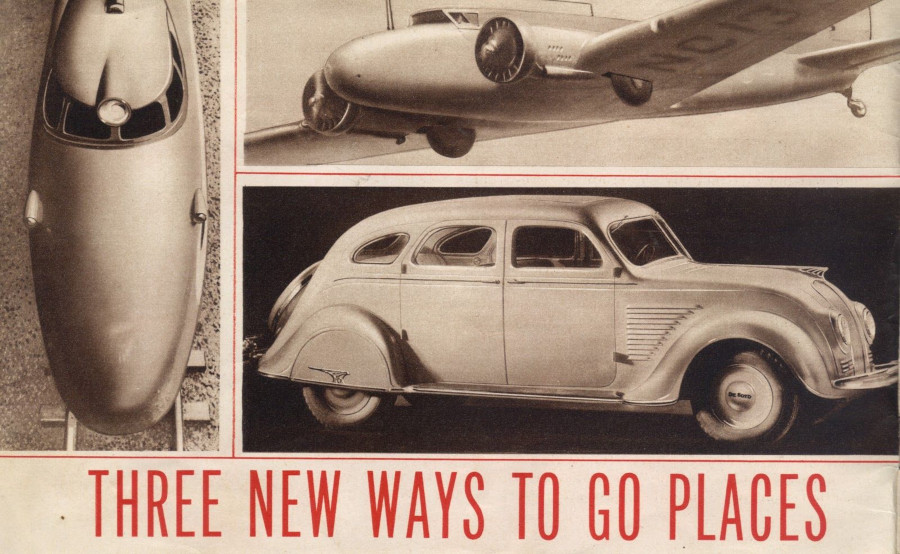 Chrysler Airflow advertising (1934 Chrysler)
Chrysler Airflow advertising (1934 Chrysler)
From an interior standpoint, passenger comfort was a focal point around which the vehicle would be designed. The rear seat was moved 20 inches forward, so that it would no longer be directly above the rear axle. The great looking interior also featured extra wide doors for easy entrance, and the seats were designed on a frame of chromed tubing to allow air to circulate beneath the driver and passengers. After more wind testing was done, it was determined that air resistance was reduced when the front of the body was wider than the rear.
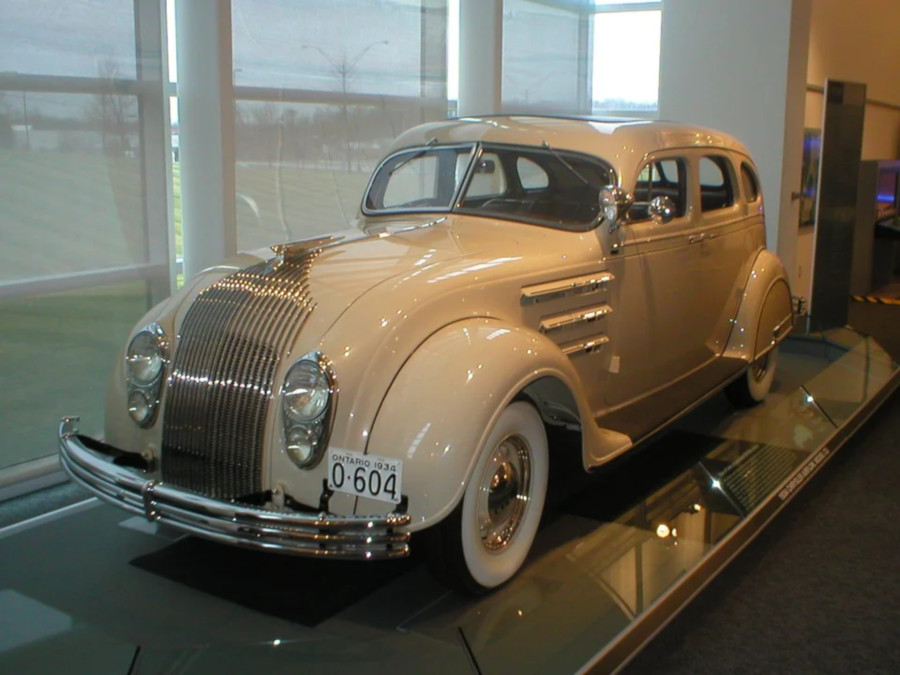 Chrysler Airflow on display at the Walter Chrysler Museum
Chrysler Airflow on display at the Walter Chrysler Museum
The 1934 DeSoto Airflow models also offered a streamlined body design which allowed three people to sit up front just like the Chrysler models. The 1935 Chrysler Airflow closely resembled the previous year’s offering, with a new hood design and single broad bumpers replacing the elaborate original triple-tiered bumper design.
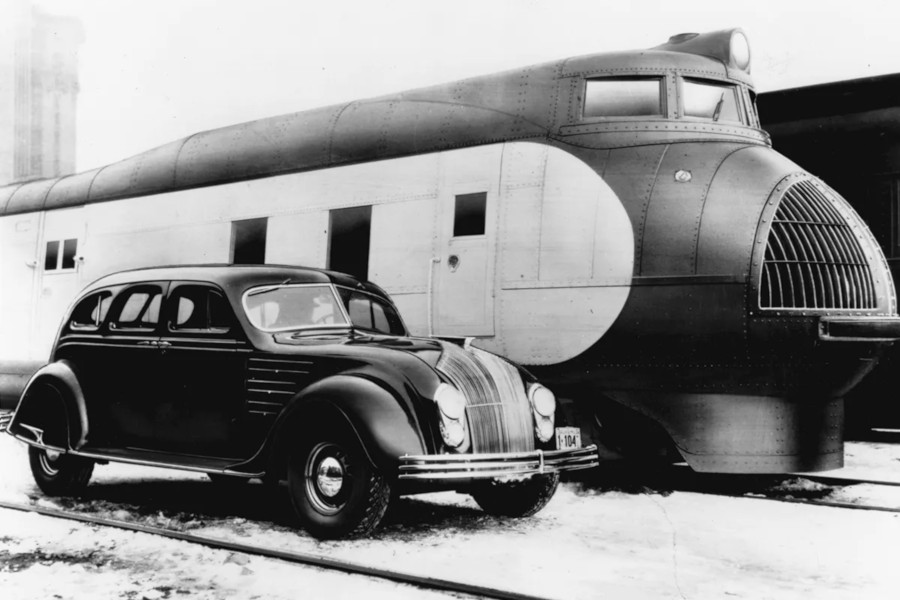 Chrysler Airflow advertising with train (Chrysler Archives)
Chrysler Airflow advertising with train (Chrysler Archives)
In 1935, the DeSoto Airflow won the coveted Grand Prix award for its styling at the Concours d’Elegance at Monte Carlo. The model offered a newly designed grille and hood that extended forward in a V-shaped aerodynamic design.
Chrysler generated a lot of buzz around the Airflow models with its advertising campaigns, and appearances on the auto show circuit generated a lot of publicity. While thousands of people saw the car, reactions were decidedly mixed. Some regarded them as exciting automobiles, but, unfortunately, many more thought they were just bad designs.
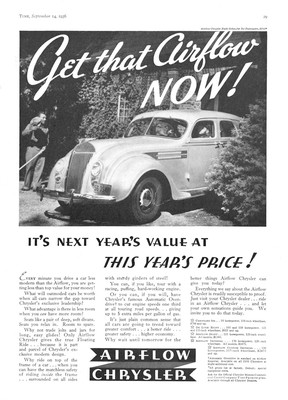 Chrysler Airflow advertisement (Chrysler Archives)
Chrysler Airflow advertisement (Chrysler Archives)
In addition to the mixed reception for the ahead of its time design, the Airflows was plagued with mechanical issues at the Chrysler plant where they were manufactured. This caused many orders to be unfulfilled at dealerships around the country.
The DeSoto Airflow was manufactured for three years and was known as the Model SE. In 1934, the Chrysler Airflow models were manufactured in three series: the Airflow Eight; the Airflow Imperial, CV; and the Custom Imperial, CX and CW. For 1936, the Chrysler Airflow models offered lifeguard tire tubes as standard equipment. The new tires had a heavy-duty tube with a second tube designed inside for safety in case of a blowout.
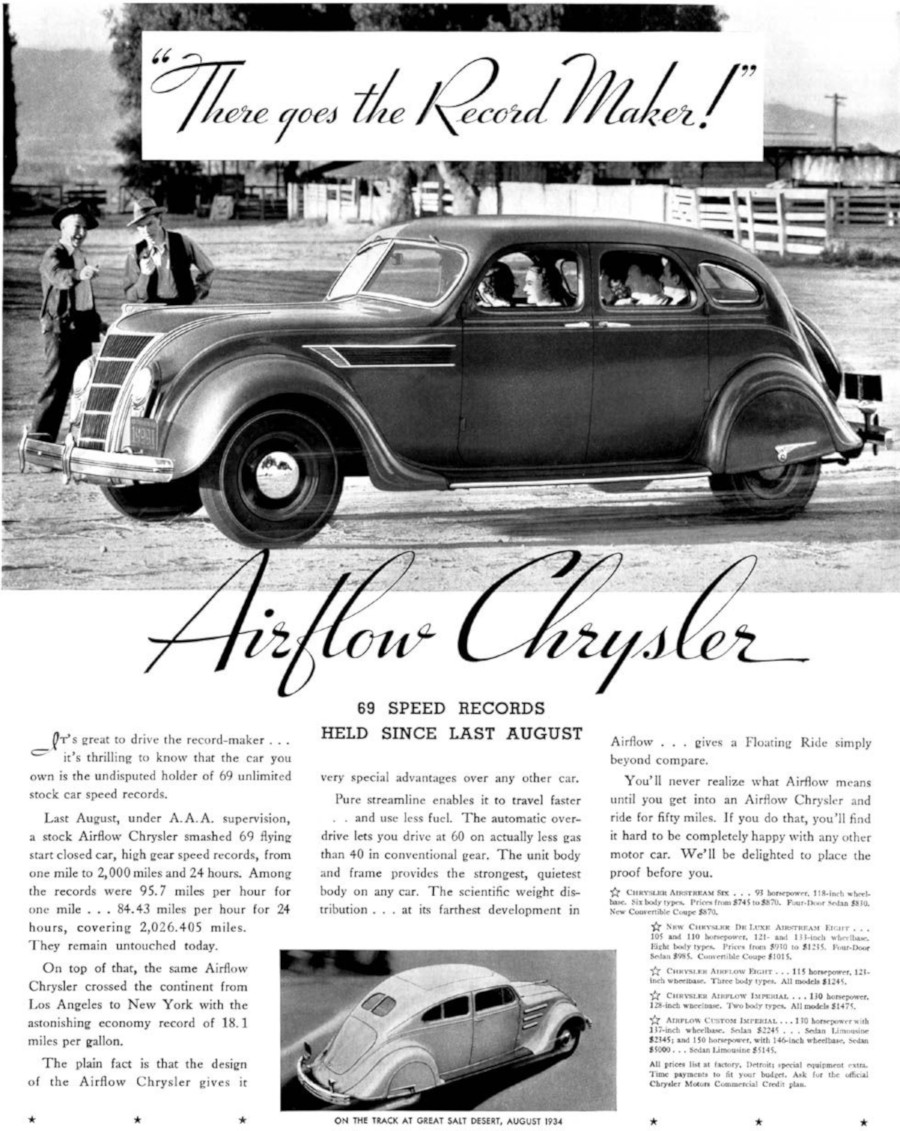 Chrysler Airflow ad (Chrysler Archives)
Chrysler Airflow ad (Chrysler Archives)
1937 was the last year for the Chrysler Airflows, with the model C-17 manufactured with a new grille, head lamp trim and hood louvers. Chrysler manufactured only 4,600 units in that final year. For DeSoto, the Airflow models were discontinued as well. Only a few styling changes were made for 1936 for two body types, and a mere 250 units were built.
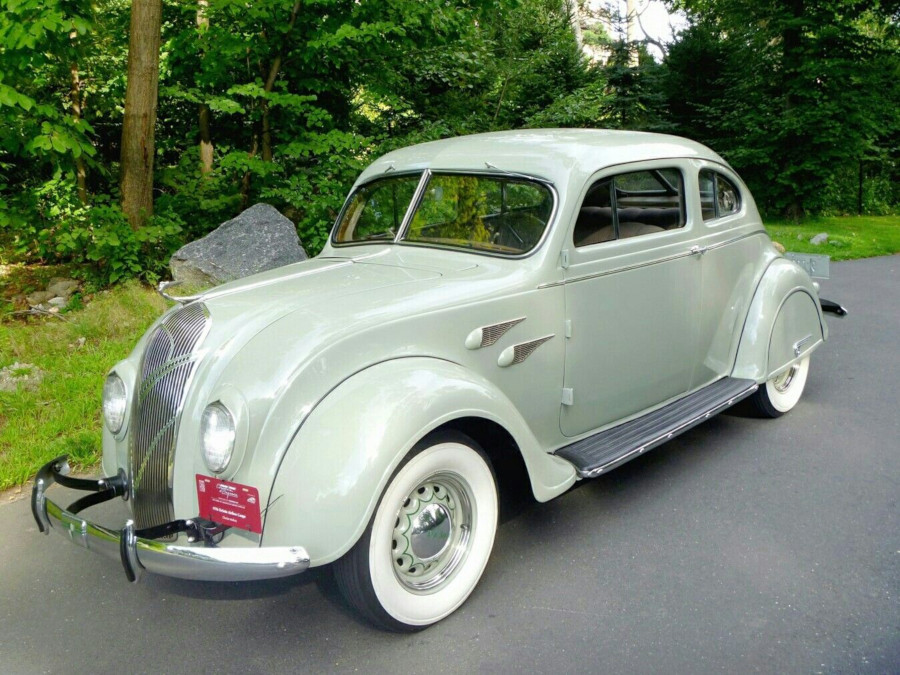 1936 DeSoto Airflow
1936 DeSoto Airflow
In conclusion, the Chrysler and DeSoto Airflow models with their streamlined designs were ahead of their time and made automotive history.
Bibliography
Butler, Don. “The Plymouth and DeSoto Story.” Crestline Publishing, 1978.
Chrysler Corporation Engineering Office “A Pictorial History of Chrysler Corporation Cars.” 1966.
Chrysler Corporation Engineering Office. “The Story of the Airflow Cars (1934-1937).” October 1963.



